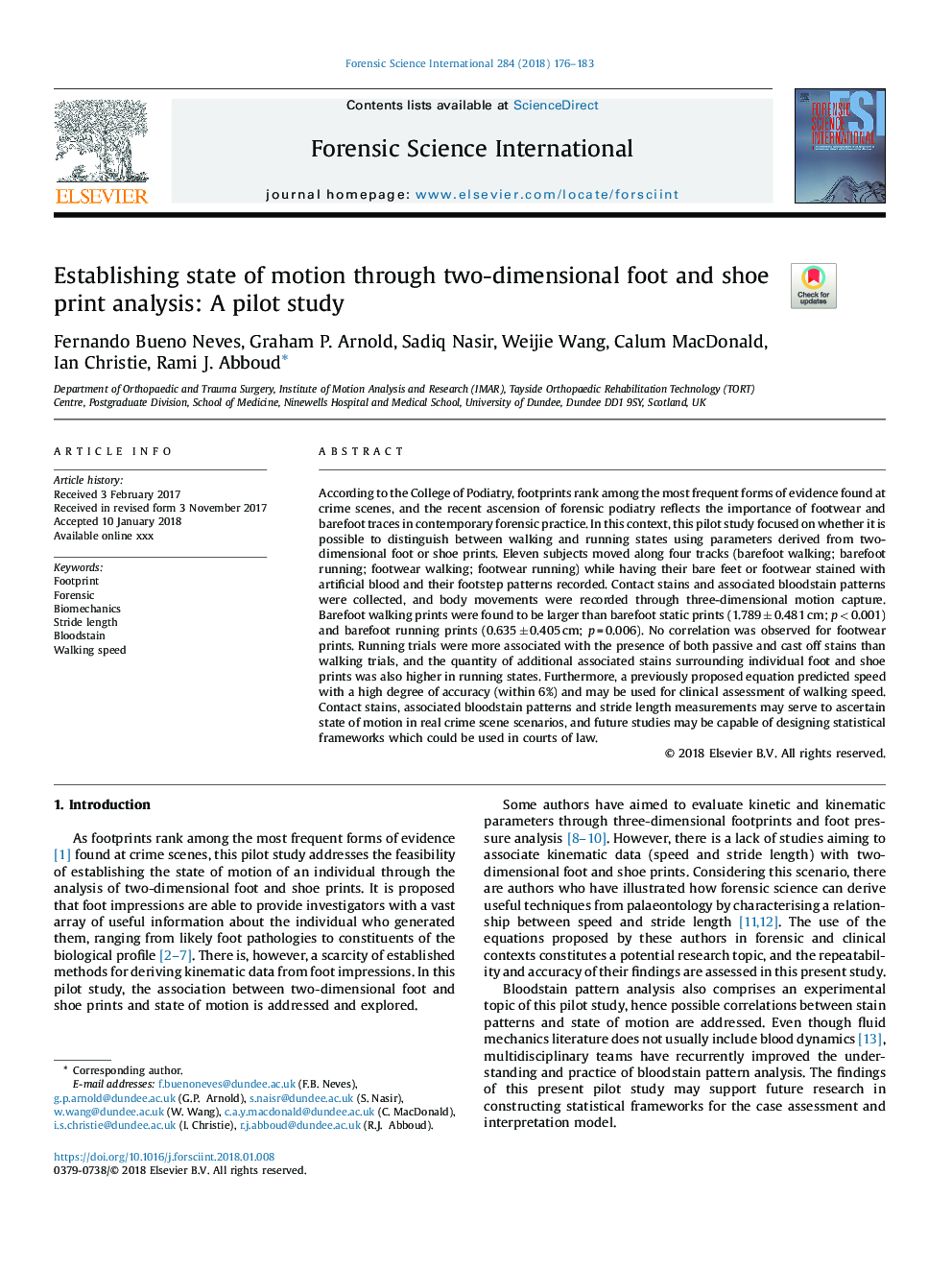| Article ID | Journal | Published Year | Pages | File Type |
|---|---|---|---|---|
| 6551278 | Forensic Science International | 2018 | 8 Pages |
Abstract
According to the College of Podiatry, footprints rank among the most frequent forms of evidence found at crime scenes, and the recent ascension of forensic podiatry reflects the importance of footwear and barefoot traces in contemporary forensic practice. In this context, this pilot study focused on whether it is possible to distinguish between walking and running states using parameters derived from two-dimensional foot or shoe prints. Eleven subjects moved along four tracks (barefoot walking; barefoot running; footwear walking; footwear running) while having their bare feet or footwear stained with artificial blood and their footstep patterns recorded. Contact stains and associated bloodstain patterns were collected, and body movements were recorded through three-dimensional motion capture. Barefoot walking prints were found to be larger than barefoot static prints (1.789 ± 0.481 cm; p < 0.001) and barefoot running prints (0.635 ± 0.405 cm; p = 0.006). No correlation was observed for footwear prints. Running trials were more associated with the presence of both passive and cast off stains than walking trials, and the quantity of additional associated stains surrounding individual foot and shoe prints was also higher in running states. Furthermore, a previously proposed equation predicted speed with a high degree of accuracy (within 6%) and may be used for clinical assessment of walking speed. Contact stains, associated bloodstain patterns and stride length measurements may serve to ascertain state of motion in real crime scene scenarios, and future studies may be capable of designing statistical frameworks which could be used in courts of law.
Related Topics
Physical Sciences and Engineering
Chemistry
Analytical Chemistry
Authors
Fernando Bueno Neves, Graham P. Arnold, Sadiq Nasir, Weijie Wang, Calum MacDonald, Ian Christie, Rami J. Abboud,
